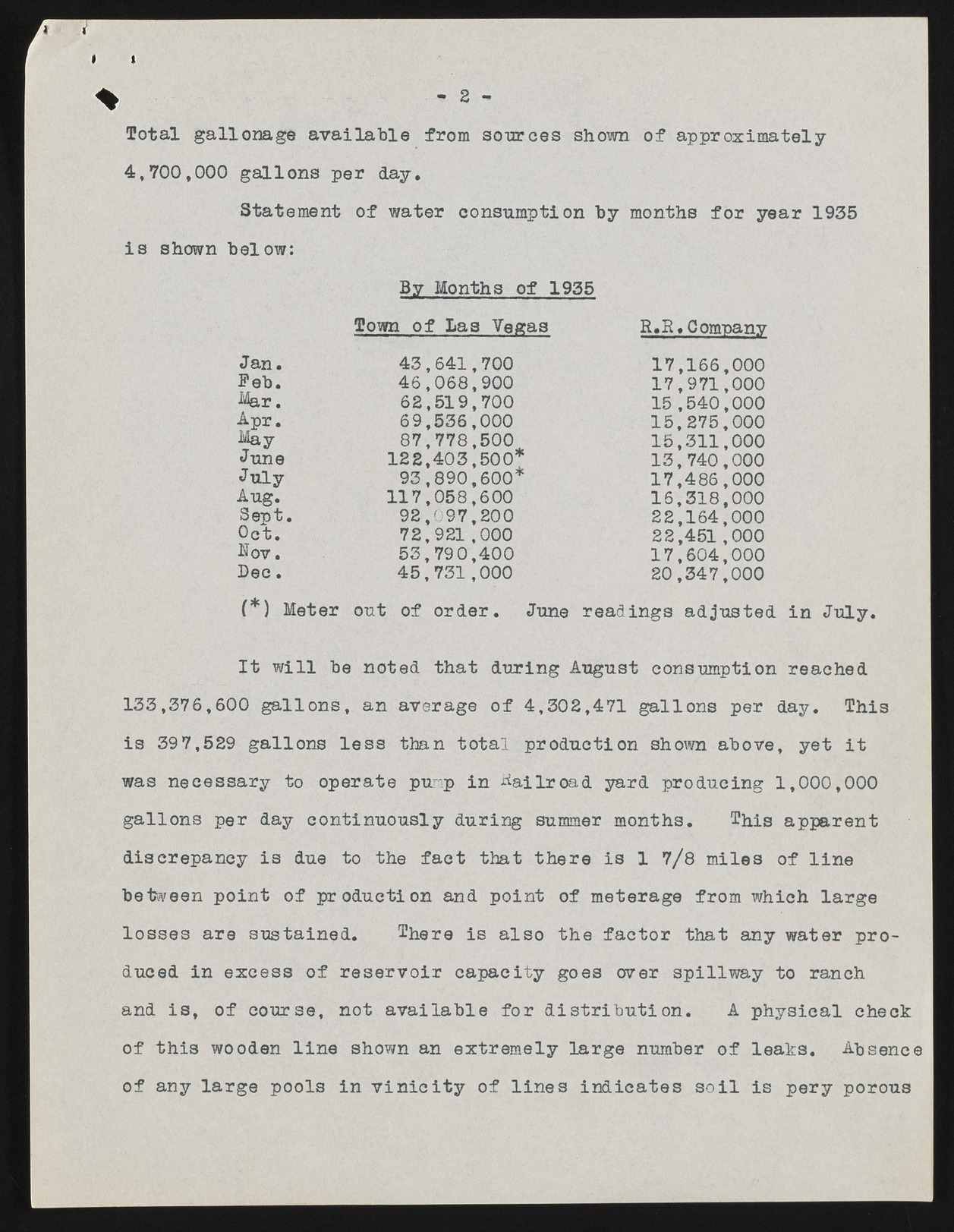Copyright & Fair-use Agreement
UNLV Special Collections provides copies of materials to facilitate private study, scholarship, or research. Material not in the public domain may be used according to fair use of copyrighted materials as defined by copyright law. Please cite us.
Please note that UNLV may not own the copyright to these materials and cannot provide permission to publish or distribute materials when UNLV is not the copyright holder. The user is solely responsible for determining the copyright status of materials and obtaining permission to use material from the copyright holder and for determining whether any permissions relating to any other rights are necessary for the intended use, and for obtaining all required permissions beyond that allowed by fair use.
Read more about our reproduction and use policy.
I agree.Information
Digital ID
Permalink
Details
More Info
Rights
Digital Provenance
Publisher
Transcription
t — 2 ~ Total gallonage available from sources shown of approximately 4,700,000 gallons per day. Statement of water consumption by months fo r year 1935 is shown below: By Months of 1935 Jan. Feb. Mar. Apr. May June July Aug. Sept. Oct. Bov. Dee. Town o f Las Vegas R.R.Company 43,641,700 17,166,000 46,068,900 17,971,000 62,519,700 15,540,000 69,536,000 15,275,000 87,778,500 15,311,000 122,403,500* 13,740,000 93,890,600* 17,486,000 117,058,600 16,318,000 92,097,200 22,164,000 72,921,000 22,451,000 53,790,400 17,604,000 45,731,000 20,347,000 (* ) Meter out of order. June readings adjusted in July. I t w ill be noted that during August consumption reached 133,376,600 gallons, an average of 4,302,471 gallons per day. This is 397,529 gallons le ss than total production shown above, yet it was necessary to operate pump in Railroad yard producing 1,000,000 gallons per day continuously during summer months. This apparent discrepancy is due to the fact that there is 1 7/8 miles of line between point of production and point of meterage from which large losses are sustained. There is also the factor that any water produced in excess of reservoir capacity goes over spillway to ranch and is , of course, not available for distribu tion . A physical check of this wooden lin e shown an extremely large number of leaks. Absence of any large pools in v in ic ity of lin es indicates s o il is pery porous

